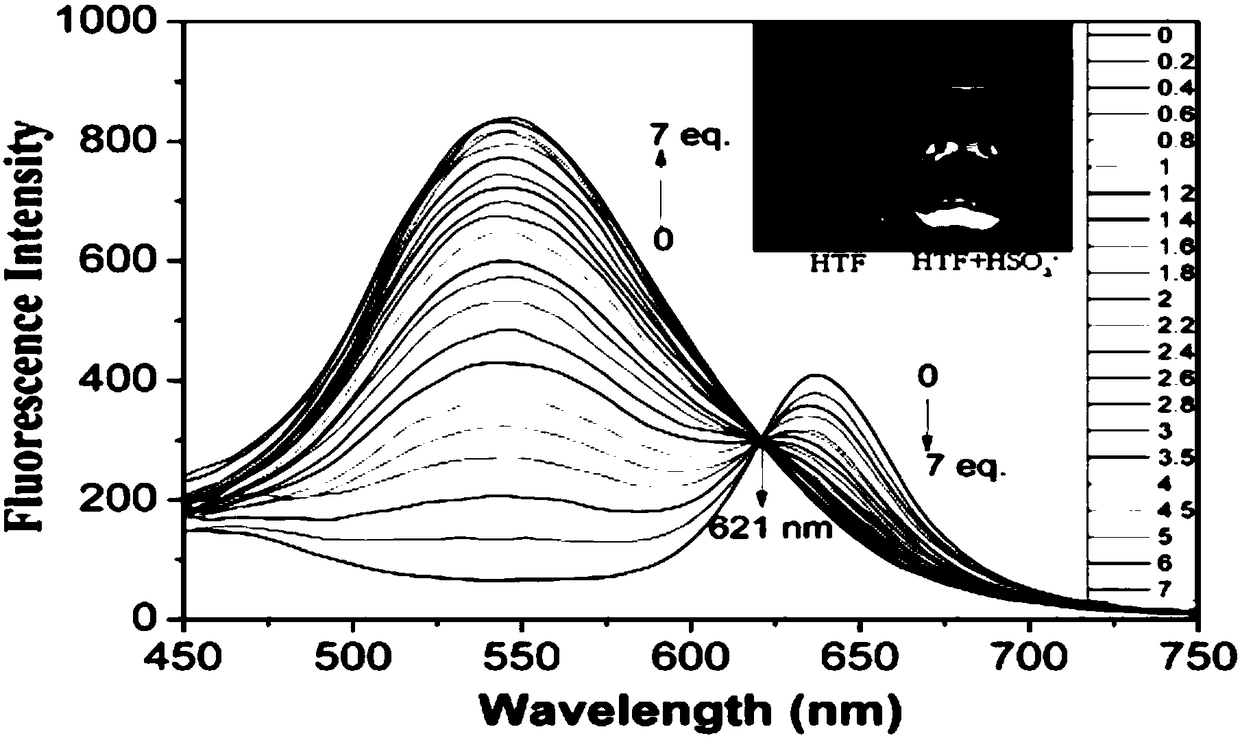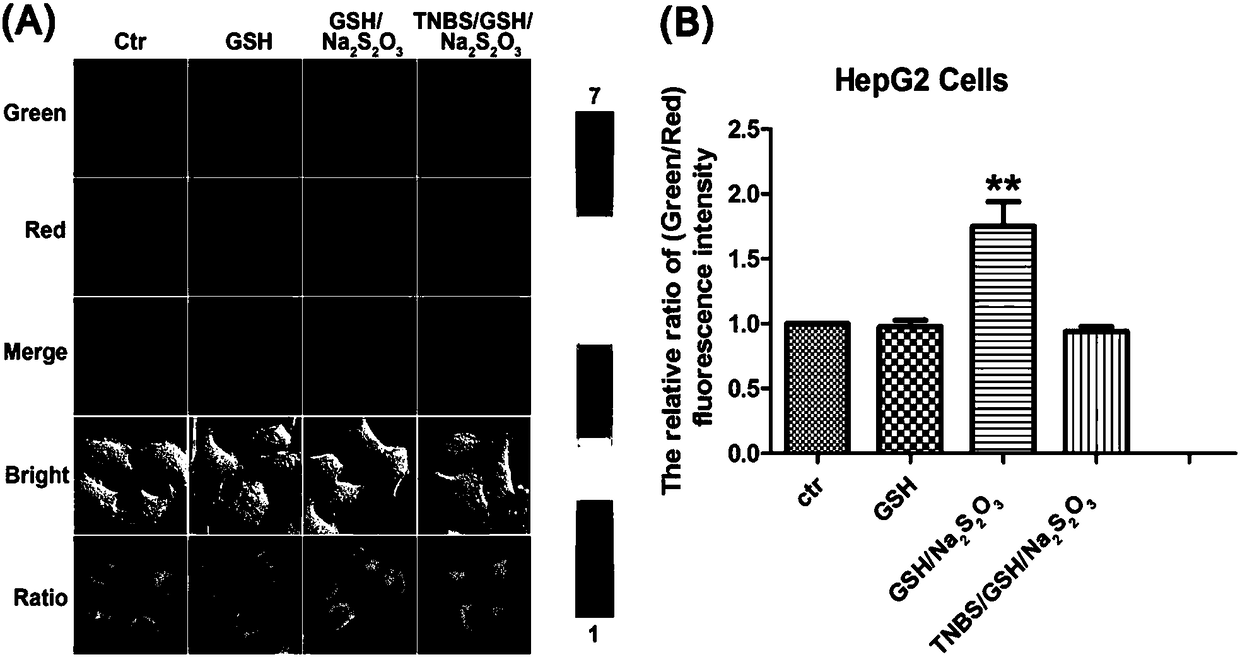Ratiometric fluorescent probe for detecting bisulfite and application of ratiometric fluorescent probe
A ratiometric fluorescent probe and bisulfite technology, applied in fluorescence/phosphorescence, luminescent materials, measurement devices, etc., can solve the problems of single signal detection and inability to image cells, and achieve the effect of broad application prospects
- Summary
- Abstract
- Description
- Claims
- Application Information
AI Technical Summary
Problems solved by technology
Method used
Image
Examples
Embodiment 1
[0028] Embodiment 1 Preparation of the ratio fluorescent probe for detecting bisulfite according to the present invention
[0029] (E)-2-(3-cyano-5,5-dimethyl-4-(4-(piperazin-1-yl)styryl)furan-2(5H)-ylidene)propane Nitrile (0.148g, 0.400mmol) and dansyl chloride (0.108g, 0.400mmol) were stirred at room temperature in dry dichloromethane (15mL) and triethylamine (0.5mL) for 1.5 hours, separated by silica gel column chromatography (dichloromethane Methane / methanol=5 / 1) to obtain the probe of the present invention (65 mg, yield 26.8%).
[0030] Melting point: 275-277°C;
[0031] H NMR spectrum determination: 1 H NMR (300MHz, DMSO-d 6 ):δ=1.74(s,6H),2.83(s,6H),3.22(t,J=5.7Hz,4H),3.51(t,J=5.6Hz,4H),6.94(d,J=15.9Hz ,1H),6.98(d,J=9Hz,2H),7.27(d,J=6.9Hz,1H),7.60-7.71(m,2H),7.74(d,J=9Hz,2H),7.86(d , J=15.9Hz, 1H), 8.17 (dd, J=1.2 and 7.5Hz, 1H), 8.34 (d, J=8.7Hz, 1H), 8.54 (d, J=8.4Hz, 1H).
[0032] Carbon NMR Spectrum Determination: 13 C NMR (75MHz, DMSO-d 6 ):25.91,45.46,45.5...
Embodiment 2
[0037] Prepare a series of 10mL probe solutions of the present invention with EtOH-PBS buffer (5:5, v / v, 10mM PBS, pH6.5), so that the probe concentration is 5 μM, wherein EtOH-PBS is PBS:EtOH=5 :5 buffer solution (pH=6.5).
[0038] Quantitatively add the aqueous solution of 0.2 to 10 equivalents of sodium bisulfite with a micro-injector respectively, and carry out ultraviolet-visible spectrophotometry and fluorescence spectrophotometry test (λ ex = 390nm).
[0039] The result shows: the fluorescent intensity ratio (I 545 / I 637 ) has a linear relationship with the concentration of sodium bisulfite, see figure 1 .
Embodiment 3
[0041] Intracellular fluorescence imaging test:
[0042] Ctr group is under the condition of 37 ℃, HepG2 cells are cultured for 1 hour in the cell culture solution adding the probe of the present invention (5.0 μ M); The probe of the present invention (5.0 μ M) is incubated 1 hour; GSH / Na 2 S 2 o 3 Groups are GSH (250 μM) and Na 2 S 2 o 3 (250μM) was incubated for 1 hour and then incubated with the probe of the present invention (5.0μM) for 1 hour; the fourth column was incubated with TNBS (10mM) for 20 minutes and then GSH (250μM) and Na 2 S 2 o 3 (250 μM) for 1 hour, followed by incubation with the probe of the present invention (5.0 μM) for 1 hour. Cell Imaging see figure 2 a.
[0043] The results show that: the probe of the present invention can detect endogenous bisulfite in cells, see figure 2 b.
PUM
| Property | Measurement | Unit |
|---|---|---|
| melting point | aaaaa | aaaaa |
Abstract
Description
Claims
Application Information
 Login to View More
Login to View More - R&D
- Intellectual Property
- Life Sciences
- Materials
- Tech Scout
- Unparalleled Data Quality
- Higher Quality Content
- 60% Fewer Hallucinations
Browse by: Latest US Patents, China's latest patents, Technical Efficacy Thesaurus, Application Domain, Technology Topic, Popular Technical Reports.
© 2025 PatSnap. All rights reserved.Legal|Privacy policy|Modern Slavery Act Transparency Statement|Sitemap|About US| Contact US: help@patsnap.com



